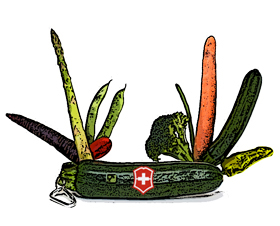There Should Only Be One Turkey At Thanksgiving
Don’t Let It Be Your Wine
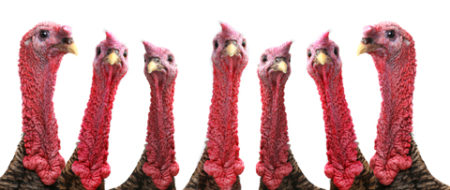
“Wine is art. It’s culture. It’s the essence of civilization and the art of living.” Robert Mondavi
“Wine. It’s how classy people get shitfaced.” Cocktail Napkin
Thanksgiving is that special time of year when wine and food writers give thanks for the overabundance of tired old clichés they get to recycle. I firmly believe that writers shouldn’t rehash old boring clichés. My job as a writer is to create new boring clichés. This week every newspaper, magazine, and wine blogger will roll out their picks for the perfect wine to pair with turkey which means you’re going to hear a lot about Pinot Noir; and why not? Pinot Noir goes with turkey like gravy goes with heart disease.
On Thanksgiving the family gathers at my house to share good food, great wine, and several strains of influenza. It’s that special holiday where a unique assortment of drunkards, criminals and racists gorge themselves on my hard-earned bounty. No wait, that’s not my family, that’s congress. I want to stress in no uncertain terms that my family are not drunkards, criminals and racists; they’re just drunkards.
Read MoreNot Another Boring Thanksgiving Wine Pairing Article
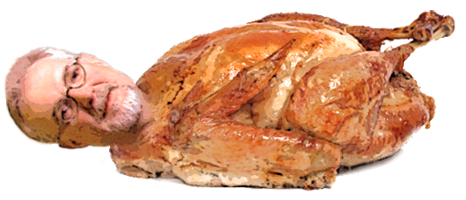
On Thanksgiving my family comes together, shares some wine, enjoys a harvest feast, and watches football, football, and more football. It’s an afternoon filled with aggressive, smash-mouth offence and bold defensive maneuvers. Then we turn on the TV and watch the game.
Cooking a Thanksgiving meal for 20 people can be a lot of work and very stressful for everyone involved, by which I mean my wife. Of course I help out in a big way as I’m in charge of the wine and stay far from the kitchen. That probably doesn’t sound like much help to you, but then you haven’t been at my house when the wine locusts arrive. The eighth plague was nothing compared to what happens when my people are thirsty.
My wine selection process is simple. I sit on the front porch and sample wine before the guests arrive. Last year the first wine I tasted was so good that I drank the whole bottle. I wasn’t alone mind you, there were lots of people driving by.
Don’t get the wrong idea. I have a lovely family. In fact I love my wife’s brother like a brother-in-law. We gather around the table and I take a heart-warming look at the family, my Uncle Ralph, the turkey, and then my wife brings in the bird. No casual attire at this table. No sir, even the greens are collard.
Read MoreNot Another Boring Thanksgiving Wine Pairing Article
Chapter Nine, Part Four.
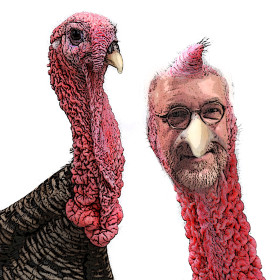 On Thanksgiving my family comes together, shares some wine, enjoys a harvest feast, and watches football, football, and more football. It’s an afternoon filled with aggressive, smash-mouth offence and bold defensive maneuvers. Then we turn on the TV and watch the game.
On Thanksgiving my family comes together, shares some wine, enjoys a harvest feast, and watches football, football, and more football. It’s an afternoon filled with aggressive, smash-mouth offence and bold defensive maneuvers. Then we turn on the TV and watch the game.
Cooking a Thanksgiving meal for 20 people can be a lot of work and very stressful for everyone involved, by which I mean my wife. Of course I help out in a big way as I’m in charge of the wine and stay far from the kitchen. That probably doesn’t sound like much help to you, but then you haven’t been at my house when the wine locusts arrive. The eighth plague was nothing compared to what happens when my people are thirsty.
My wine selection process is simple. I sit on the front porch and sample wine before the guests arrive. Last year the first wine I tasted was so good that I drank the whole bottle. I wasn’t alone mind you, there were lots of people driving by.
Don’t get the wrong idea. I have a lovely family. In fact I love my wife’s brother like a brother-in-law. We gather around the table and I take a heart-warming look at the family, my Uncle Ralph, the turkey, and then my wife brings in the bird. No casual attire at this table. No sir, even the greens are collard.
Read MoreThe Salt Conundrum In Food & Wine Pairing.
Chapter Nine, Part Eight.
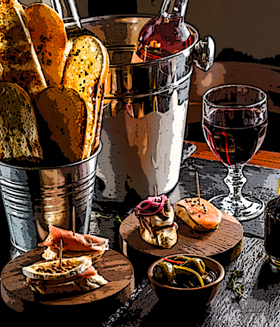 When pairing food with wine, sweet and sour tastes fall neatly into the cancellation category, bitter and piquant are subject to the cumulative effect, and umami is best grouped with neutral pairings, but what about salt? In moderation, salt doesn’t seem to have any conspicuous consequence, but how does excessive saltiness in food affect the taste of wine? To learn how (or if) salt fits into the A. cancellation, B. cumulative or C. neutral categories, I invited some friends over for some organoleptic research. They quickly declined until I told them that meant we were going to eat and drink wine.
When pairing food with wine, sweet and sour tastes fall neatly into the cancellation category, bitter and piquant are subject to the cumulative effect, and umami is best grouped with neutral pairings, but what about salt? In moderation, salt doesn’t seem to have any conspicuous consequence, but how does excessive saltiness in food affect the taste of wine? To learn how (or if) salt fits into the A. cancellation, B. cumulative or C. neutral categories, I invited some friends over for some organoleptic research. They quickly declined until I told them that meant we were going to eat and drink wine.
Good old fashioned research is difficult and time consuming but in the name of conscientious reporting the WASTED team (Wine Snark Academy for Sensory Testing, Evaluation & Debauchery) created a salty feast and drank five bottles of wine because that’s the kind sacrifice we’re willing to make in the name of, umm … science, yeah that’s it, science.
Read MoreThe Neutral Effect In Food and Wine Pairing.
The impact of the chemical reactions taking place in your mouth when you combine food and wine can be very obvious when you’re experiencing the cancellation effect or the cumulative effect, but there’s another interaction between food and wine that’s just as rewarding, but much less pronounced. I call this subtle interplay the neutral effect. I realize that describing a food and wine pairing as neutral sounds sort of, well … neutral, but that doesn’t mean these combinations are boring. Neutral pairings occur when similar flavors come together in a safe, reassuring place, sort of like Switzerland.
Read MoreThe Cumulative Effect In Food And Wine Pairing.
Chapter Nine, Part Six.
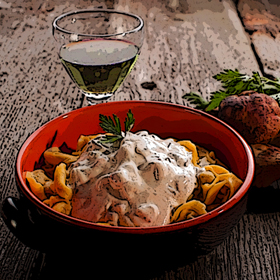 When pairing food with wine the cancellation effect works to your advantage once you understand how to balance the taste or texture of sweet and acidic food with similar traits in wine. While acidity and sweetness cancel each other out when combined on your palate, bitter and piquant sensations accumulate and magnify one another. The same can be said for pairing low acid foods with low acid wines so I’ll go ahead and say it; creamy or fatty traits do not cancel each other out; they accumulate on your palate (and also on your waistline). So after many years of deliberation I’ve decided to call this the cumulative effect.
When pairing food with wine the cancellation effect works to your advantage once you understand how to balance the taste or texture of sweet and acidic food with similar traits in wine. While acidity and sweetness cancel each other out when combined on your palate, bitter and piquant sensations accumulate and magnify one another. The same can be said for pairing low acid foods with low acid wines so I’ll go ahead and say it; creamy or fatty traits do not cancel each other out; they accumulate on your palate (and also on your waistline). So after many years of deliberation I’ve decided to call this the cumulative effect.


